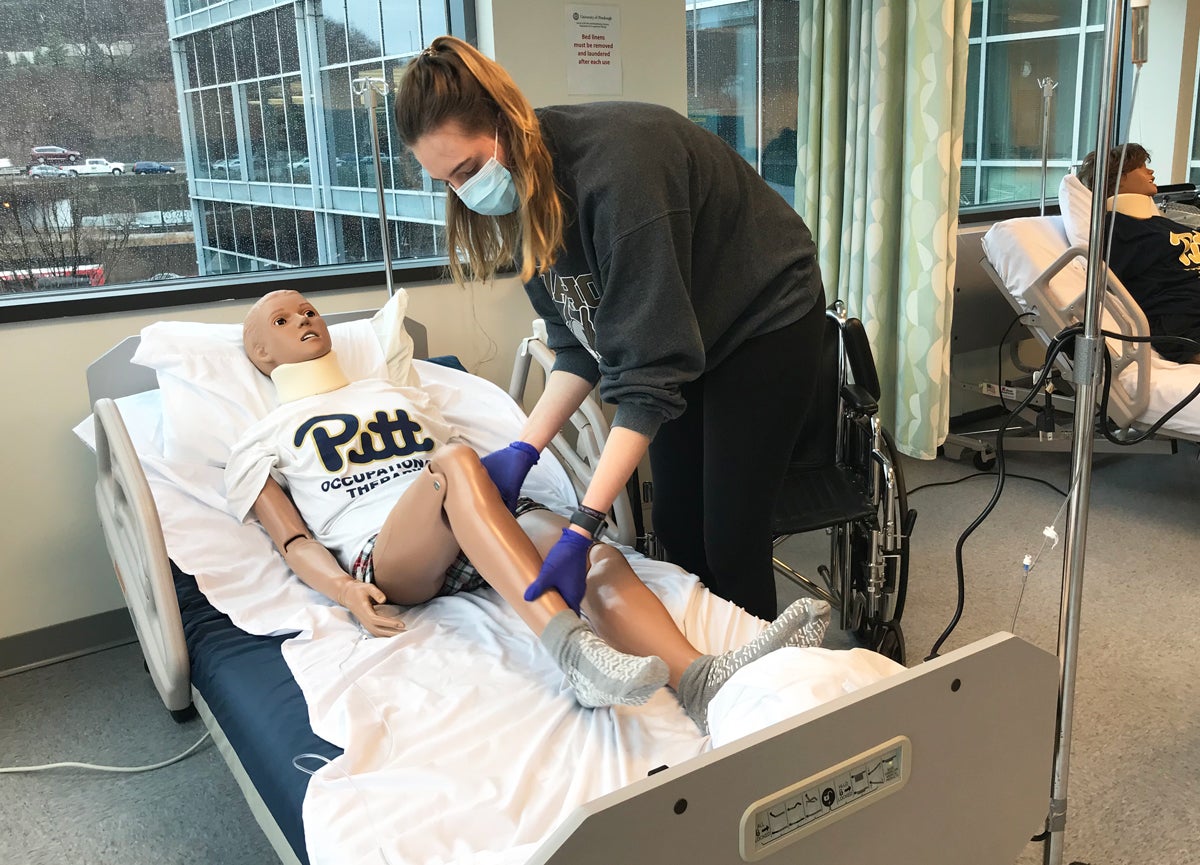At the University of Pittsburgh Department of Occupational Therapy (OT), clinical simulation is transforming the way future occupational therapists learn and practice. Far beyond textbooks and lectures, simulation provides students with realistic, interactive experiences that mirror the complexities of real-world clinical practice within a safe, structured environment.
Clinical simulation is an educational approach that creates lifelike situations to help students build and refine essential skills. These experiences are carefully designed to reflect clinical realities and allow students to make decisions, solve problems and engage in therapeutic interactions, but without the risks associated with live patient care.
Professor Joanne Baird, who is leading and implementing the use of clinical simulation, states, “Our simulation program was developed using best practices, and is designed to meet students where they are, allowing them to put together the knowledge and skills they need for clinical practice. Simulation is the ideal educational modality to promote those hard-to-teach skills such as clinical reasoning and managing challenging social interactions. The simulations are consistently reported to be powerful and positive learning experiences by current students and alumni alike.”
Simulations in occupational therapy education can involve:
- Standardized Patients – actors trained to consistently portray specific conditions
- Role Plays – guided scenarios to develop interpersonal and clinical communication skills
- Manikins and Task Trainers – for learning hands-on techniques like transfers or mobility support
- Video/Computer-Based Scenarios – for decision-making and clinical reasoning
- Immersive Virtual Reality (VR) – to explore complex environments like home safety assessments or sensory processing experiences
Each type of simulation supports different learning goals, from improving technical skills to enhancing empathy and professional judgment.
Simulation plays a vital role in preparing Pitt OT students for clinical success. Some of the key benefits include:
- Safe Skill Practice: Students can practice hands-on techniques and clinical conversations without risk to actual patients.
- Immediate Feedback: Instructors and peers provide timely guidance to reinforce learning.
- Exposure to Rare or Challenging Situations: Students face scenarios they might not encounter during traditional fieldwork.
- Reflection and Debriefing: Each session includes time to analyze actions, thought processes and outcomes—deepening understanding and critical thinking.
- Repetition and Mastery: Learners can repeat simulations to gain confidence and competence over time.
Simulations are also integrated throughout the curriculum, aligning with specific course content to reinforce concepts and clinical reasoning at every stage of a student’s development.
Pitt OT’s use of clinical simulation aligns with trends in health professions education.
While 70% of occupational therapy programs nationwide now use simulation, Pitt OT has been a leader in strategic integration by ensuring that each simulation experience has a clear purpose, structured design and measurable learning outcomes.
Research supports the effectiveness of simulation for improving:
- Skill-based performance (such as transfers and ADLs)
- Clinical decision-making
- Communication and interprofessional collaboration
Perhaps most importantly, students report that simulation experiences are highly engaging, confidence-building and relevant to real-life practice.
As health care becomes more complex, the ability to think critically, adapt quickly and respond compassionately will be more important than ever. Clinical simulation helps bridge the gap between classroom learning and real-world performance. Simulation can help ensure that Pitt OT students are not only ready for fieldwork but prepared to lead in practice.

